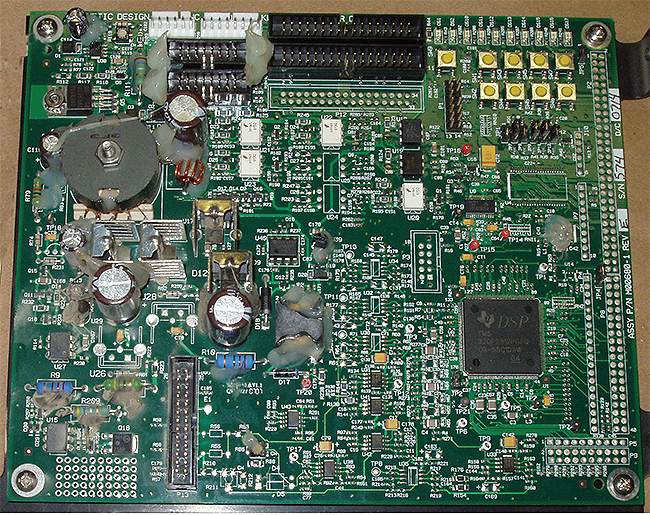Digital signal processors (DSPs) are being used in switching power supplies able to synthesize pure sine waves for use in high-reliability (hi-rel) military applications.
Ruggedized digital inverters were installed in the M1068, a Command Communications variant of the U.S. Army’s M113 family of armored personnel carriers. The original M113 Armored Personnel Carrier was first fielded in Vietnam. To date, an estimated 80,000 M113s, including a long list of variants, have been produced and used by over 50 countries worldwide, making it one of the most widely used armored fighting vehicles of all time.
During this time, the M113 has been continuously updated to meet the demands of the modern battlefield. Since then, the M113 family of vehicles are being upgraded, reconfigured and introduced as entirely new systems, including the M1068.
The M1068 variant is used as a tactical operations center capable of long range communications and includes 4.2-kW auxiliary power unit (APU) mounted on the right front of the vehicle to provide 24-V power.
As part of this project, BAE Systems required two hi-rel, ruggedized 2.5-W pure sine wave inverters per vehicle to convert 24 Vdc power generated by the vehicle-mounted APU into usable multi-kilowatt levels of ac for powering communications devices, lighting, computers and other electronic devices.
Although more expensive, pure sine wave inverters provide cleaner utility-grade power than quasi-sine-wave models. Pure sine wave inverters are helpful when operating sensitive electronic devices, including communications equipment, that require high-quality waveform with little harmonic distortion.
In addition, pure sine wave models have a high surge capacity, which means they are able to exceed their rated wattage for a limited time. This lets vehicle motors start easily, though they can draw many times their rated power during start up.
Bob Seidenberg, former Senior Quality Assurance Manager with BAE Systems, explained that the 2.5-kW inverters also had to meet shock and vibration requirements that could only be met by hi-rel inverters.
“The shock requirement for the inverters installed on the M1068 was close to 30 gs, in three directions (vertical, horizontal and transverse) and the vibration spectrum was also demanding,” he said.

The pure sine wave supplies come from Magnetic Design Labs in Santa Ana, Calif. According to Kamran Kazem, MDL VP and chief technology officer, despite the 30-g requirement for the M1068, the military specified that the inverters had to withstand 100 gs. This was well beyond the amount of shock the vehicle would ever realistically experience, based on military tests conducted in the roughest terrain that maxed out at 15 gs.
Kazem added that hi-rel electronic systems and components are no longer the exclusive domain of aerospace and defense. Today, medical, transportation, communications, infrastructure and industrial all have applications where the price of failure is high.
“These power converters might not have to withstand the same extreme conditions as the military, but vibration, shock, humidity and other inherent environmental problems are still factors, so the need for hi-rel and rugged power converters certainly applies to those markets as well.”
DSP is also a key element in a new generation of modular, stackable inverter options designed to provide a range of 1 to 20 kW of dc-ac power through a single, customizable unit. This type of system, available from custom power converter designers like MDL, consists of rack-mounted inverter modules that can stack in a parallel configuration, letting the user add as many inverters as needed to meet the power requirements.
Each unit connects to a communications controller that is responsible for synchronization, load sharing and any external communications. The individual inverters are hot swappable, enabling the addition or replacement of modules on the fly.
“This type of modular design provides project managers with a system that fits their power requirements without having to develop a new unit just for their specific project,” Kazem said. “This eliminates the need for many application-specific designs, and could also enable faster delivery of the power converter at a much more economical cost.”
References
Magnetic Design Labs
magneticdesign.com


Leave a Reply